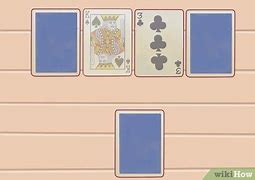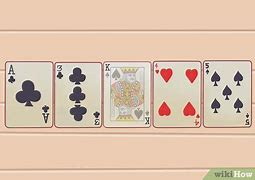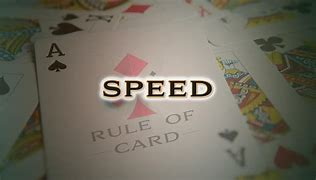Content Menu
● Game Setup
● Gameplay Instructions
● Strategies for Playing Speed
● Variations of Speed
● Conclusion
● Frequently Asked Questions
>> 1. How many players can play Speed?
>> 2. What age range is suitable for this game?
>> 3. How long does a typical game last?
>> 4. Can I modify the rules?
>> 5. What should I do if I run out of playable cards?
Speed is an exhilarating card game that tests players' reflexes and quick thinking. It's designed for two players and can be played with a standard deck of 52 playing cards. The objective is straightforward: be the first player to discard all your cards. This guide will walk you through the setup, gameplay instructions, strategies for winning, and some variations of the game.

Game Setup
To start playing Speed, you'll need a standard deck of 52 playing cards. Here's how to set up the game:
1. Shuffle the Deck: Begin by thoroughly shuffling the deck to ensure a random distribution of cards.
2. Deal Cards: Each player is dealt 20 cards, which they keep hidden from their opponent. The remaining cards form the draw pile.
3. Create Playing Hands: From their dealt cards, players create a visible hand of 5 cards that they will use during the game.
4. Set Up Center Piles: Place two cards face-up in the center of the table. These will serve as the starting point for gameplay.
Gameplay Instructions
Once the setup is complete, you can begin playing Speed. The gameplay is fast-paced and requires quick reactions. Here's how it works:
1. Start the Game: Both players simultaneously flip their center cards face-up. There is no countdown; as soon as both players are ready, the game begins.
2. Playing Cards: Players can play cards from their hand onto the center piles if they are one rank higher or one rank lower than the displayed cards. For example, if a 5 is showing, players can place either a 4 or a 6 on top of it.
3. Simultaneous Play: Unlike many card games, Speed allows players to play cards simultaneously without taking turns. This dynamic adds to the excitement and speed of the game.
4. Drawing Cards: If a player runs out of playable cards in their hand, they must draw from their personal draw pile until they have 5 cards again.
5. Flipping New Cards: When both players cannot make any moves, they flip over new cards from their respective draw piles to continue gameplay.
6. Winning the Game: The game continues until one player successfully discards all their cards, at which point they declare victory!

Strategies for Playing Speed
While Speed relies heavily on quick reflexes, employing effective strategies can significantly enhance your chances of winning. Here are some tips:
1. Stay Observant: Keep a close eye on both center piles and anticipate your opponent's moves. Being aware of what your opponent might play next can give you a competitive edge.
2. Manage Your Hand Wisely: Try to maintain a diverse range of cards in your hand—both low and high numbers—to maximize your options during play.
3. Practice Quick Reflexes: Since Speed is all about agility, practicing your reaction times can help you become more adept at playing quickly.
4. Distract Your Opponent: Engaging in friendly banter or playful competition can throw off your opponent's concentration and slow them down when it's time to play.
5. Know When to Hold Back: Sometimes it may be strategic to hold onto certain cards for later use, especially if you sense that your opponent is close to winning.
Variations of Speed
While the basic rules of Speed are straightforward, many players enjoy modifying them to add variety or increase difficulty. Here are some popular variations:
1. Doubles Rule: In this variation, players can play a card equal in value to one of the center cards in addition to those that are one rank higher or lower. For instance, if a 7 is showing, players could play a 6, 7, or 8.
2. Multiple Card Play: Some versions allow players to play multiple cards at once if they follow the ranking rule (ascending or descending). For example, if you have a sequence like 5-6-7-8-9 and a 4 is showing in the center, you could play all those cards simultaneously.
3. Jokers as Wild Cards: Introducing jokers into the game as wild cards can add an exciting twist; they can be played on any card regardless of its rank or suit.
4. Spit Variation: A variant known as Spit involves each player dealing out more cards into stockpiles before starting play, adding an extra layer of strategy and chaos.
5. Team Play: For larger groups, consider forming teams where two pairs compete against each other using modified rules for teamwork and communication.
Conclusion
Speed is not only about quick thinking but also about strategy and adaptability under pressure. It's an exciting way to challenge yourself and engage with friends or family in friendly competition. Whether you're new to card games or an experienced player looking for something fast-paced and fun, Speed offers an enjoyable experience that anyone can appreciate with just a little practice.

Frequently Asked Questions
1. How many players can play Speed?
Speed is typically played with two players but can be adapted for team play with larger groups.
2. What age range is suitable for this game?
Speed is suitable for ages six and up, depending on their ability to understand and follow game rules independently.
3. How long does a typical game last?
A game of Speed usually lasts between five minutes and twenty minutes, depending on player skill levels and strategies employed.
4. Can I modify the rules?
Yes! Many players enjoy modifying rules to enhance gameplay or add challenges; feel free to experiment with different variations.
5. What should I do if I run out of playable cards?
If you run out of playable cards in your hand during your turn, simply draw from your personal draw pile until you reach five cards again.
































